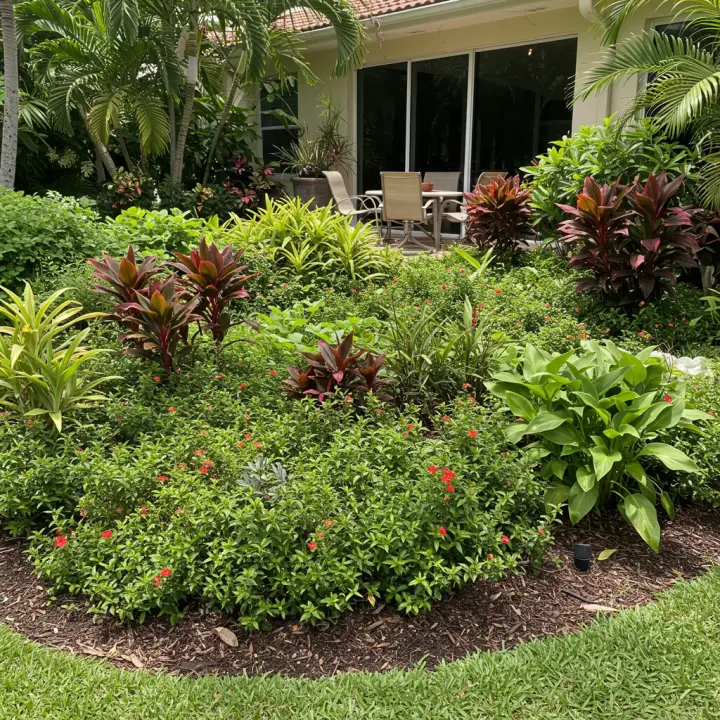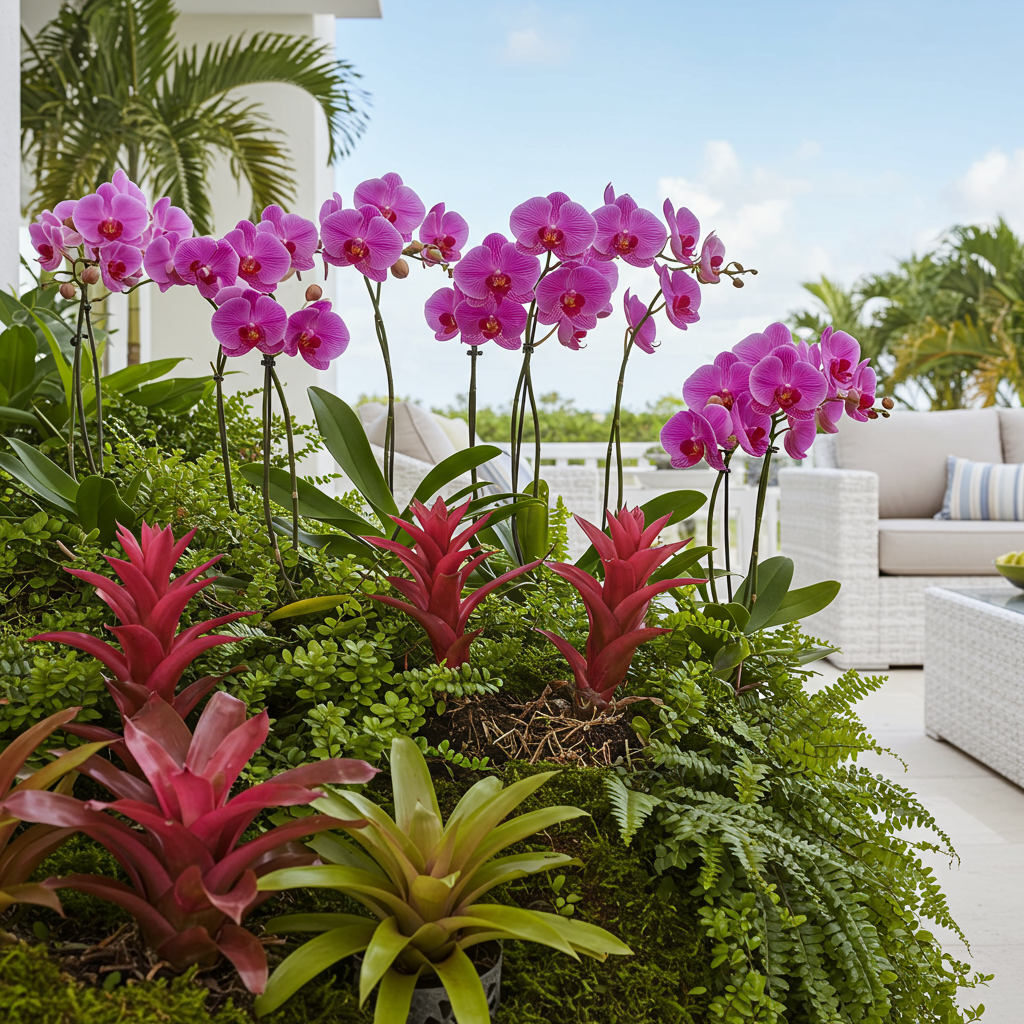Embrace the vibrant beauty of South Florida by transforming your lanai into a lush, inviting sanctuary. This guide delves into the most suitable and stunning lanai plants South Florida homeowners can choose, ensuring year-round beauty and ease of care within your screened enclosure.
South Florida’s unique climate, characterized by warmth, humidity, and abundant sunshine (even if filtered), presents specific opportunities and challenges for plant enthusiasts. Selecting the right plants for your lanai means creating a space that thrives, offering a serene escape and a touch of the tropics right outside your door.

Why Choose the Right Lanai Plants for South Florida?
Your lanai isn’t just an extension of your home; it’s a unique microclimate. Screened enclosures offer protection from harsh winds, intense sun, and many common pests, yet they also limit natural rainfall and alter light conditions. Opting for plants that naturally adapt to South Florida’s heat and humidity, while tolerating filtered light and container life, is crucial for long-term success. The right choices will flourish with minimal fuss, enhancing your outdoor living experience.
Key Considerations for Selecting Lanai Plants in South Florida
Before you start filling your cart, evaluate these factors to ensure your plant choices are a perfect fit for your specific lanai environment.
Light Conditions
The most critical factor! Observe your lanai throughout the day. Does it receive bright, indirect light all day, or does the sun hit directly for a few hours? Most lanais offer partial shade to bright, indirect light, which is ideal for many tropical understory plants. Direct, intense sun can scorch some plant varieties, while too little light leads to leggy growth and poor flowering.
Humidity & Air Circulation
South Florida naturally boasts high humidity, which many tropical plants adore. Lanais often retain this humidity, creating an ideal environment. Ensure there’s decent air circulation to prevent fungal issues, especially for plants prone to them.
Maintenance Level
Consider your lifestyle. Do you want plants that need daily attention, or are you looking for low-maintenance beauties? Factor in watering frequency, fertilizing schedule, and pruning needs.
Size & Growth Habit
Remember, most lanai plants will be in containers. Choose varieties that won’t quickly outgrow their pots or overwhelm your space with their mature size. Upright or gracefully arching plants often work best.
Pest & Disease Resistance
Even in a screened enclosure, pests can sometimes find their way in. Selecting plants known for their resilience can save you a lot of hassle.
Pet Safety
If you have curious pets, research whether your chosen plants are toxic. Look for non-toxic alternatives to keep your furry friends safe.
Top Picks: Best & Stunning Lanai Plants for South Florida
Ready to bring your lanai to life? Here are some of the most beautiful and well-suited plants for South Florida’s screened enclosures, categorized for ease of selection.
Vibrant Tropical Blooming Beauties
Bring a splash of color with these flowering marvels:
Orchids (Phalaenopsis, Oncidium, Vanda): Phalaenopsis (Moth Orchids) are classic, long-blooming, and perfect for indirect light. Oncidiums offer sprays of smaller, often fragrant flowers. Vandas, with their stunning, large blooms, can be hung and appreciate high humidity.
Bromeliads (Guzmania, Aechmea, Neoregelia): These striking plants offer incredible foliage and long-lasting, vibrant “flowers” (bracts). They require minimal care and thrive on humidity, often collecting water in their central cups.
Peace Lily (Spathiphyllum): Elegant white “flowers” (spathes) emerge from glossy dark green leaves. They love consistent moisture and bright, indirect light, also acting as excellent air purifiers.
Anthurium: Known for their heart-shaped, waxy, colorful spathes (red, pink, white) and dark green leaves. Anthuriums prefer high humidity and bright, indirect light.
Mandevilla (Dwarf Varieties): While many Mandevillas are vigorous climbers, dwarf varieties can be trained on a small trellis or allowed to spill from hanging baskets, offering continuous trumpet-shaped blooms in sunny spots.
Lush Foliage for Green Serenity
For texture, structure, and year-round green appeal:
Ferns (Boston, Kimberly Queen, Maidenhair): Ferns adore the humid, shaded conditions often found in lanais. Kimberly Queen ferns are particularly robust and adaptable, while Boston and Maidenhair ferns offer a softer, more delicate look.
ZZ Plant (Zamioculcas zamiifolia): Incredibly drought-tolerant and low-light adaptable, the ZZ plant is perfect for those who tend to forget to water. Its glossy, upright foliage adds modern appeal.
Snake Plant (Sansevieria trifasciata): Another nearly indestructible choice, snake plants come in various heights and patterns, thriving on neglect and low light. They are excellent air purifiers.
Cast Iron Plant (Aspidistra elatior): True to its name, this plant is incredibly tough, tolerating very low light and infrequent watering. Its broad, dark green leaves provide a classic, architectural look.
Palm Varieties (Lady Palm, Areca Palm – smaller versions): For a tropical canopy effect, smaller versions of these iconic palms work well in large pots. Lady Palms are particularly suited to lower light and add a touch of elegance.
Edible & Aromatic Choices (Where Conditions Allow)
If your lanai receives ample sunlight, consider adding some practical, fragrant plants:
Herbs (Mint, Basil, Rosemary): Potted herbs can thrive with enough sun, bringing fresh flavors and delightful scents to your lanai. Mint and basil love consistent moisture; rosemary prefers a drier touch.
Dwarf Citrus (Calamondin, Meyer Lemon): If your lanai gets several hours of direct sun, dwarf citrus trees can produce fragrant blossoms and small, edible fruits, adding a true taste of Florida.
Caring for Your South Florida Lanai Plants
Even the best plant needs proper care. Here’s how to keep your lanai beauties thriving:
Watering Wisdom
The biggest mistake is often overwatering. Check the soil moisture by sticking your finger an inch or two deep. Water when the top soil feels dry. Most lanai plants prefer consistently moist but not soggy soil. Ensure pots have drainage holes.
Fertilization
During the growing season (spring through fall), feed your plants with a balanced liquid fertilizer or slow-release granules. Follow package directions, as over-fertilizing can harm plants.
Pruning & Maintenance
Regularly remove dead or yellowing leaves to keep plants looking tidy and prevent disease. Prune to maintain shape and size, encouraging bushier growth or more blooms.
Pest Management
Even indoors, pests can appear. Inspect your plants regularly for signs of spider mites, mealybugs, or scale. Treat with insecticidal soap or neem oil for organic control. Good air circulation helps, too.
Repotting
As plants grow, they may become root-bound. Repot into a slightly larger container with fresh potting mix every 1-2 years or when growth appears stunted.
FAQs: Your Questions About Lanai Plants in South Florida Answered
Q: Can I use native Florida plants in my lanai?
A: Absolutely! Many Florida native plants are well-suited to lanai conditions, particularly those that naturally grow in shaded or understory environments. Examples include various ferns, or certain species of Begonia.
Q: How much sun do lanai plants need?
A: Most lanai plants thrive in bright, indirect light. “Bright indirect light” typically means they can see the sky clearly but are not exposed to direct sun rays for more than an hour or two, especially during the harshest midday hours. Observe your lanai’s light over a full day to select the best fit.
Q: What are the lowest maintenance lanai plants?
A: For truly low-maintenance options, consider the ZZ Plant, Snake Plant, Cast Iron Plant, and many Bromeliad varieties. These can tolerate infrequent watering and don’t demand much attention.
Q: Are there pet-friendly options for lanais?
A: Yes! Some excellent pet-friendly choices include many types of ferns (Boston, Maidenhair), the Prayer Plant (Maranta leuconeura), and certain Palms like the Areca Palm and Lady Palm. Always double-check specific plant varieties if you have pets.
Q: How do I protect my lanai plants from cold snaps?
A: For occasional South Florida cold snaps (temperatures below 45-50°F), move sensitive plants further into the house if possible, or cover them with blankets or tarps within the lanai. For extremely delicate tropicals, bringing them indoors for a few days might be best.
Conclusion: Create Your Tropical Lanai Oasis
Transforming your South Florida lanai into a vibrant, verdant retreat is incredibly rewarding. By thoughtfully selecting stunning lanai plants South Florida can offer, you create a personalized oasis that reflects your style and thrives in the local climate. With careful consideration of light, maintenance, and a little loving care, your screened enclosure will become a lush extension of your home, offering beauty and tranquility year-round. Get ready to relax and enjoy your very own tropical paradise!

